Spring 2014. Decided to try growing asparagus, which is something I’ve had my eye on for years. I suppose I could have tried it in a giant container before I had my own earth to plant in… but that doesn’t seem like the right approach for a longterm perennial. Asparagus grow as bundles of roots which send new shoots up every spring. If cared for, supposedly they can thrive for decades. So, off to YouTube I went in search of some advice from seasoned asparagus growers, which it turns out are in short supply in my neighborhood.
I soaked each crown in advance of planting. Each is a bundle of roots growing out from a single whitish bud, which is really a pre-asparagus shoot. I ordered 10 crowns, five for each side. You can see one of the root buds forming little white shoot, somewhere around the middle of my index finger in this photo.

While they soaked, I dug down a few inches into a bed, and created five mounts of dirt for the asparagus crowns to lie on. I did the same on the opposite side bed.

Here is a crown, after nestling it into place on its little mound and spreading its roots around evenly. There’s that early shoot again, poking up from the root mass. White asparagus is grown by perpetually mounding more and more soil on top of the shoots, so that they never see the light of day until they are dug up and are harvested, rather than letting them grow above soil and snipping them at the soil level.
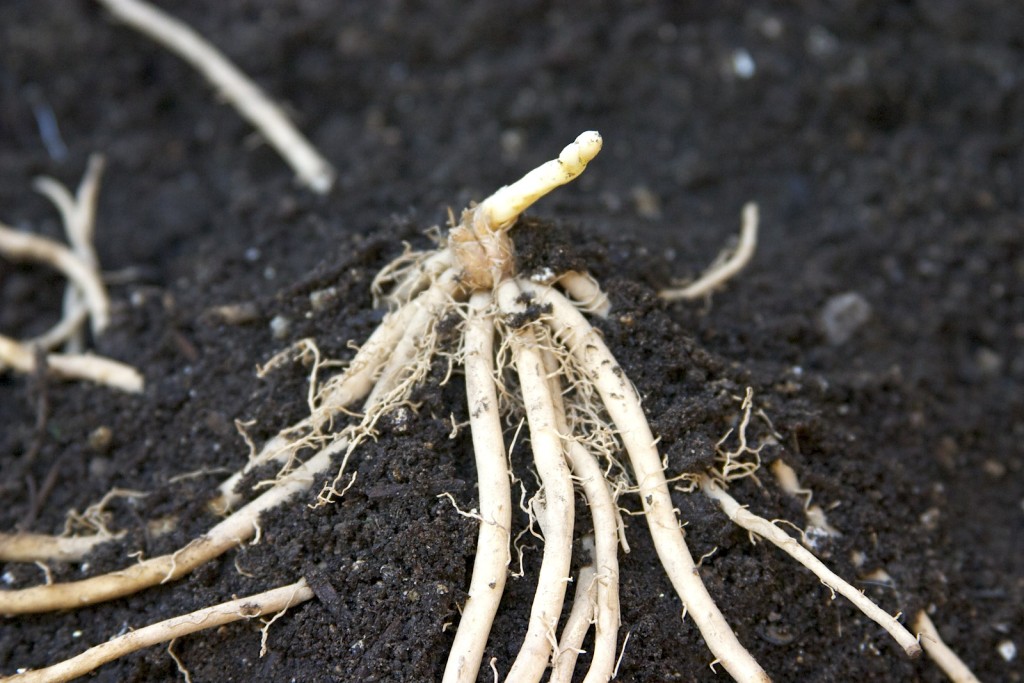
I placed a few crowns in each bed, giving them enough space to spread out over the years.
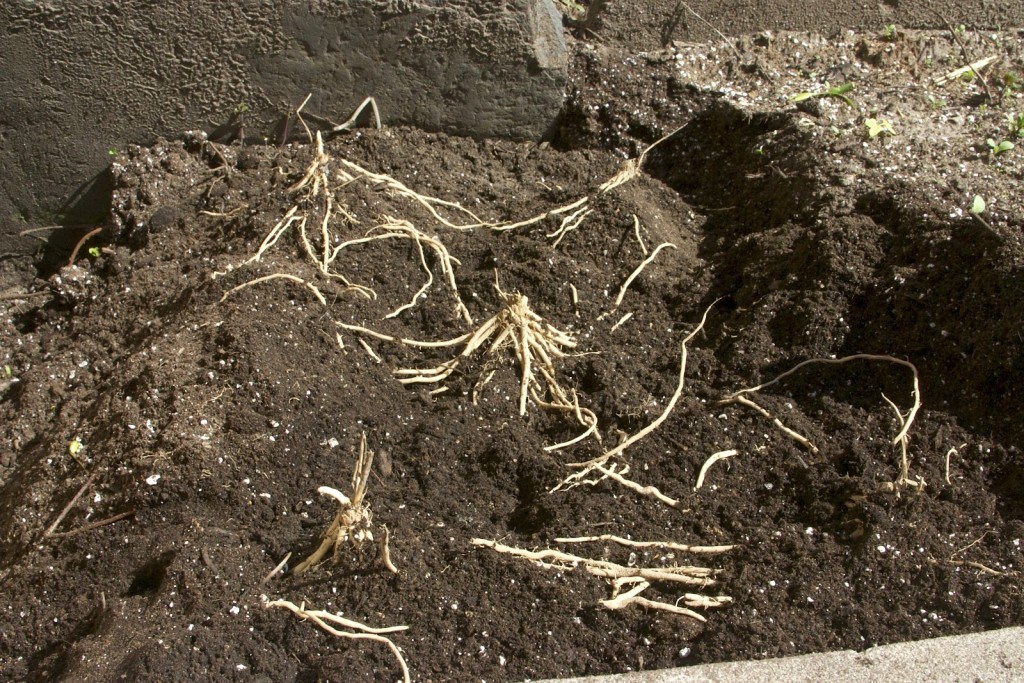
I covered them with a healthy layer of compost and organic fertilizer, then topped it off with the lighter soil mix. They are said to be heavy feeders and also to tolerate higher pH than most garden veggies, as well as moist soil tracing back to their swampy beginnings.

Lo and behold, I was almost shocked to see the first shoots a couple of weeks later! Here shown alongside some wood ash and charcoal from the BBQ, which I repurposed as soil amendments to increase alkalinity in this location.
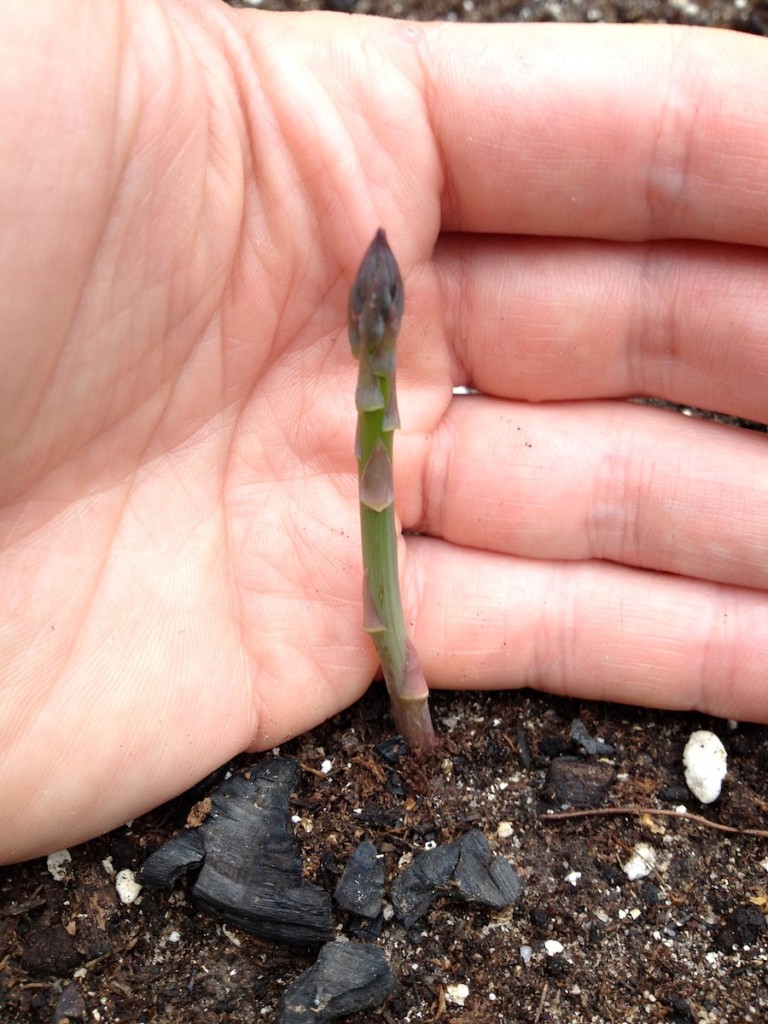
More shoots. OK I might have tried one of these skinny little guys when I couldn’t hold back. But no more than one. No more than one.
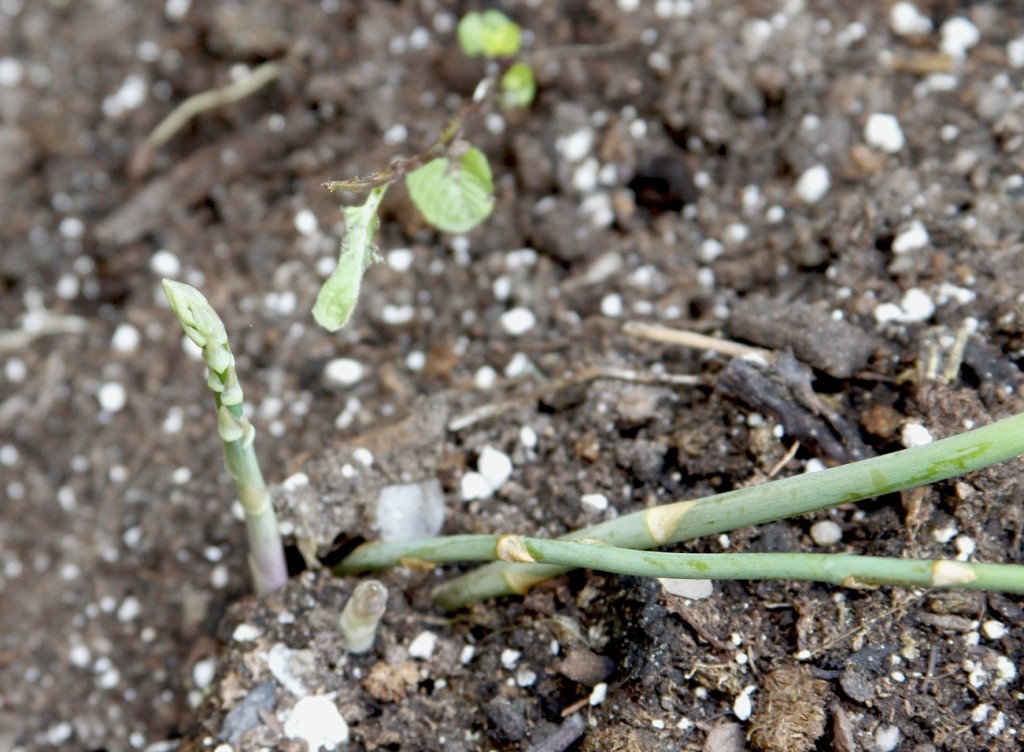
Here, one particularly happy crown is sprouting a half-dozen shoots. I was hoping that 10 crowns X 10 shoots per crown would mean 100 spears per season, roughly. That has not materialized… yet. Not one to miss out, a lone morning glory tries to sneak its way into the party. This shot is from before I built a little fence to keep the asparagus from sliding over the edge of their little hill. These guys need a little shoring up as you can see.
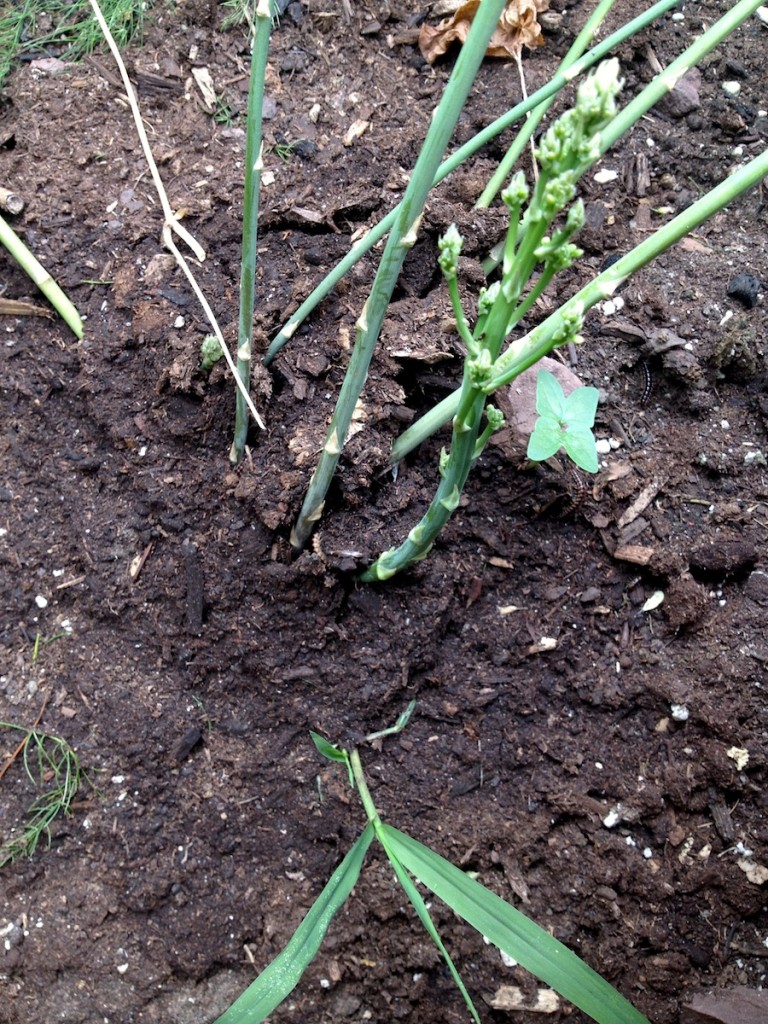
The first year, the idea is not to pick them for eating, but to let the shoots grow out naturally. The shoots turn leafy and photosynthesize. This helps the roots grow out underground, giving each crown strength and eventually producing a dense network of roots to support more vigorous grown in the years to come.
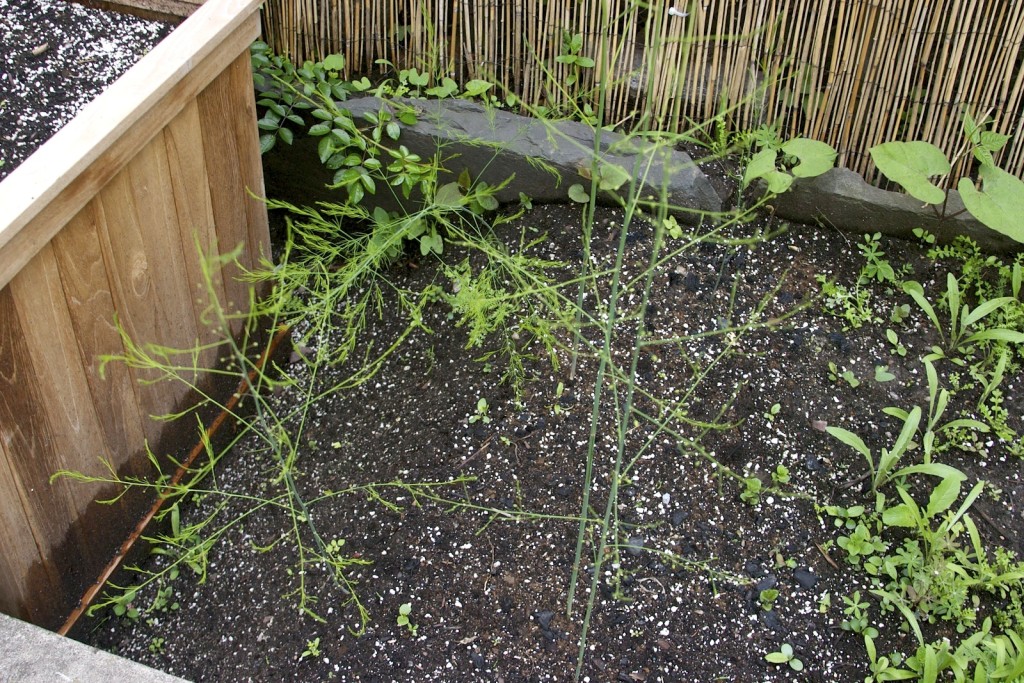
These outgrown shoots, referred to as ‘ferns’, grow to a height of a couple of feet or more in the first year.
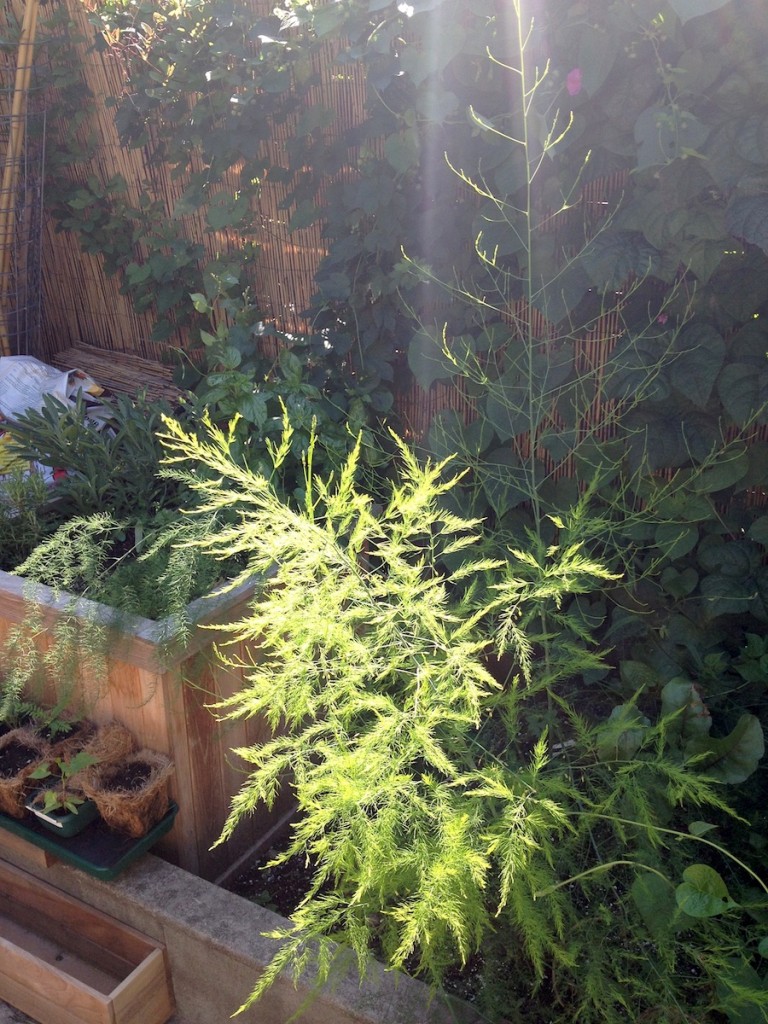
Supposedly mine were all male… which made me wonder why some were producing red berries full of asparagus seeds by end of season. Hmm.

The next season, 2015, would have its own ups and downs.